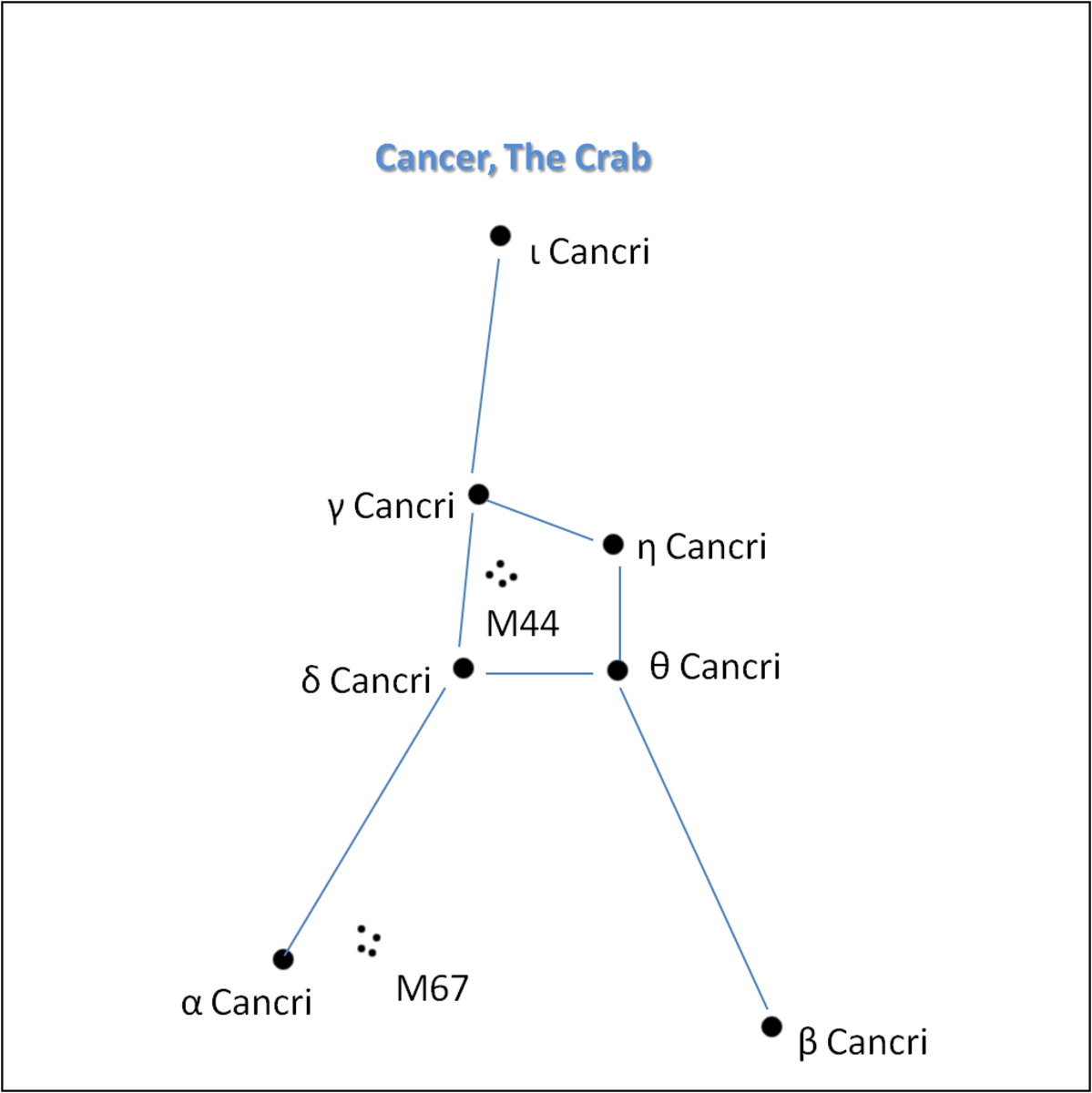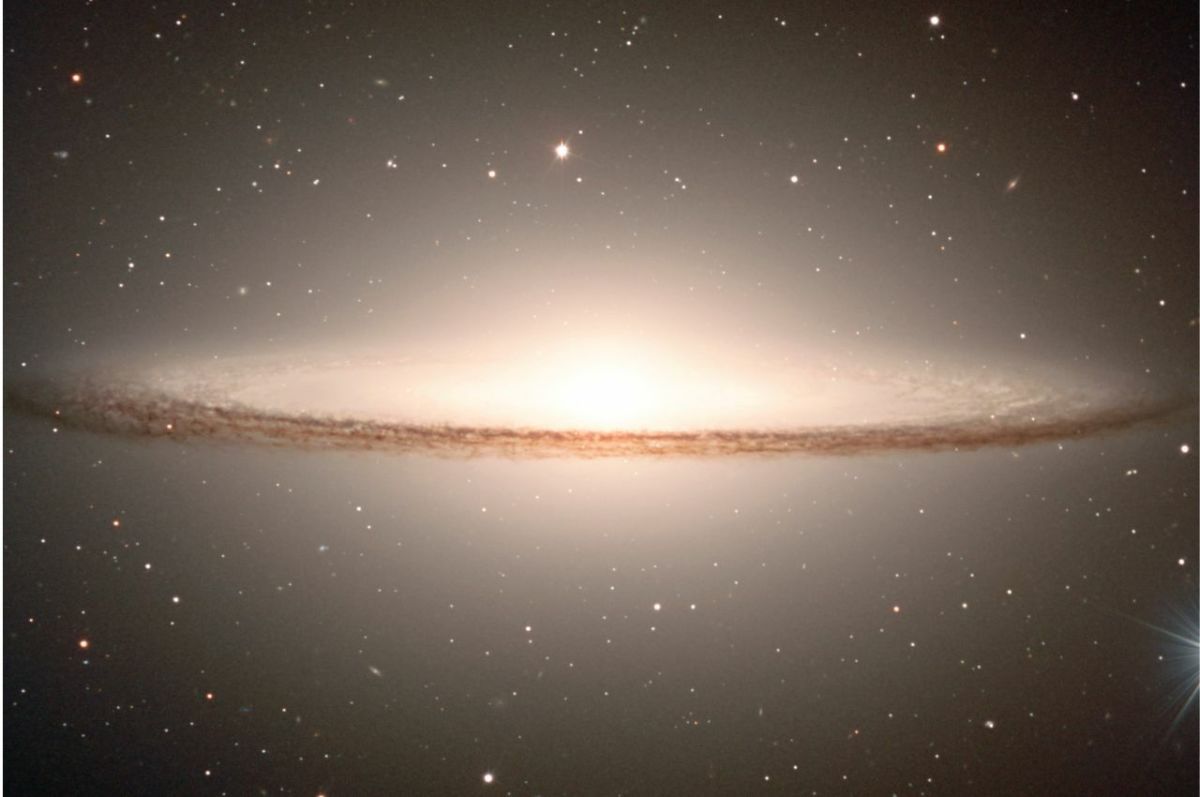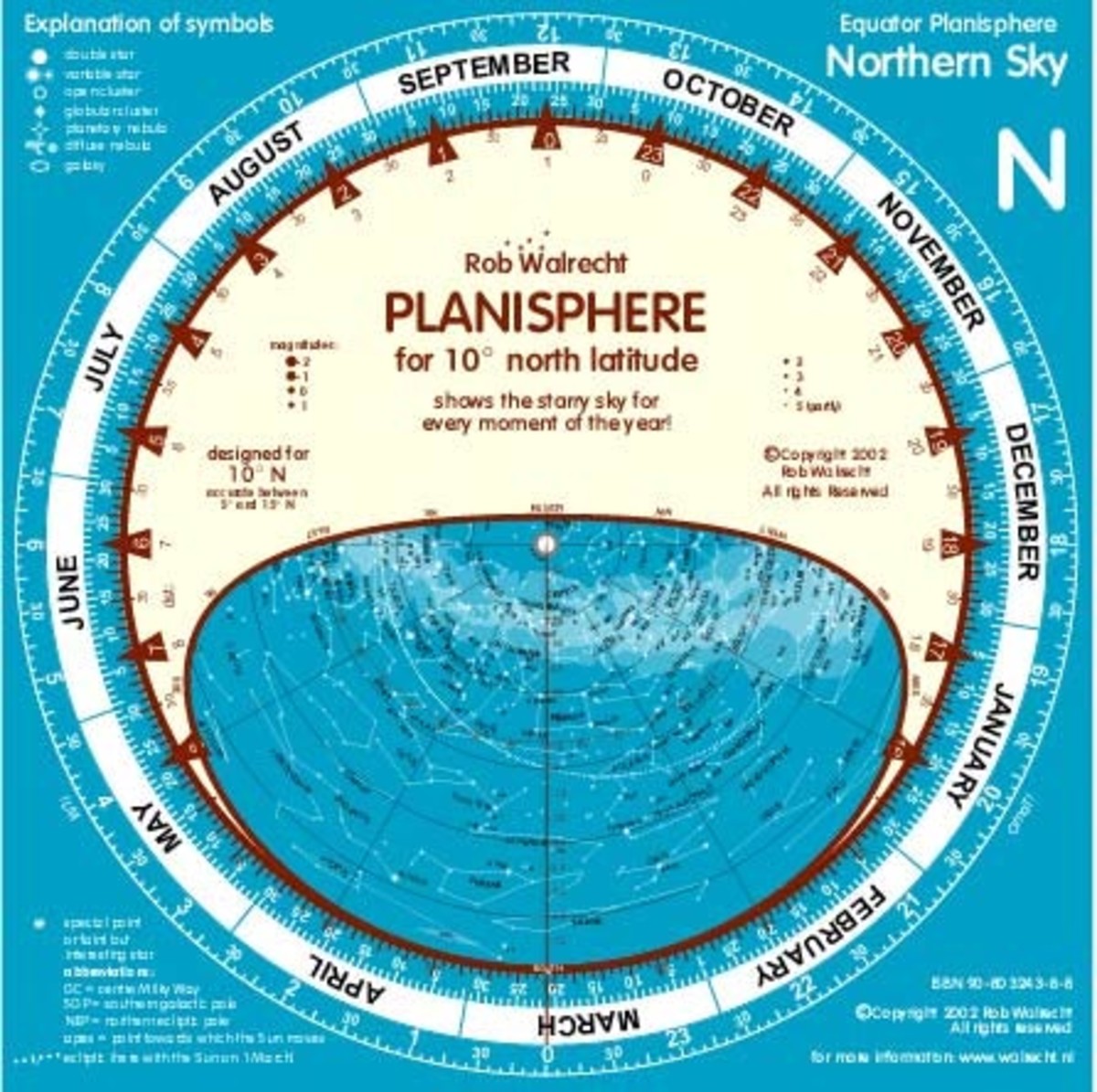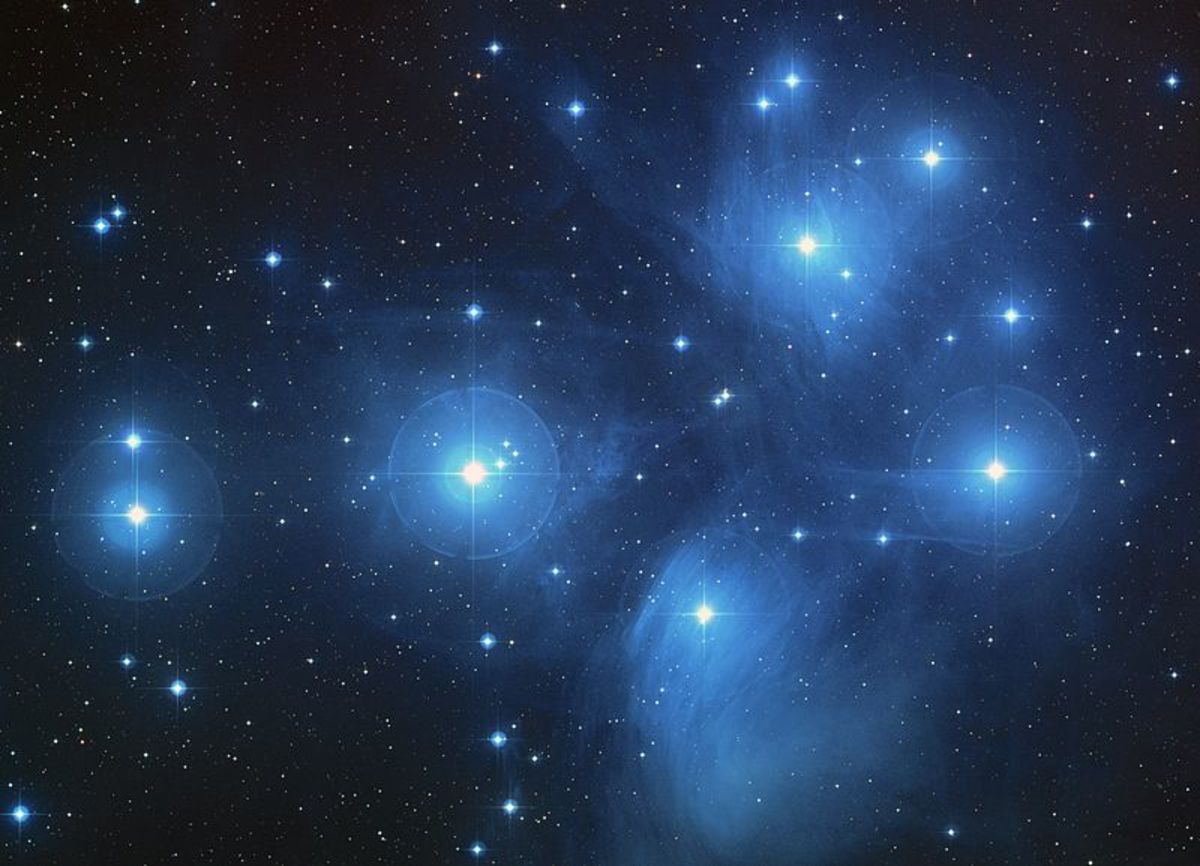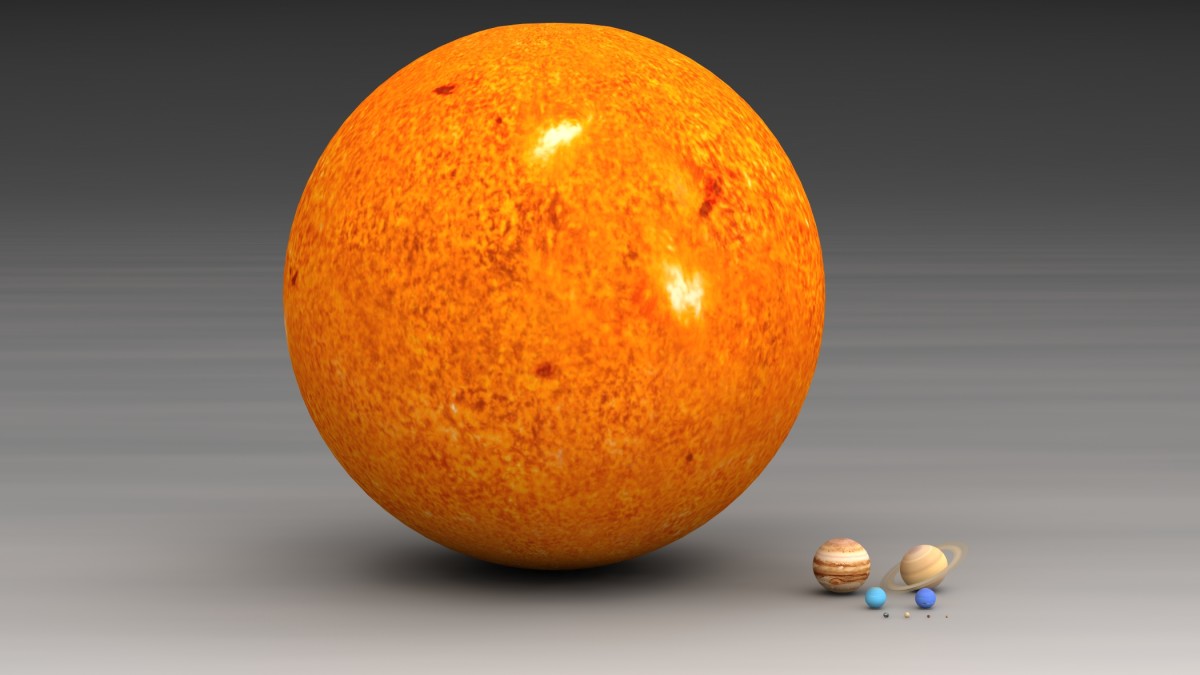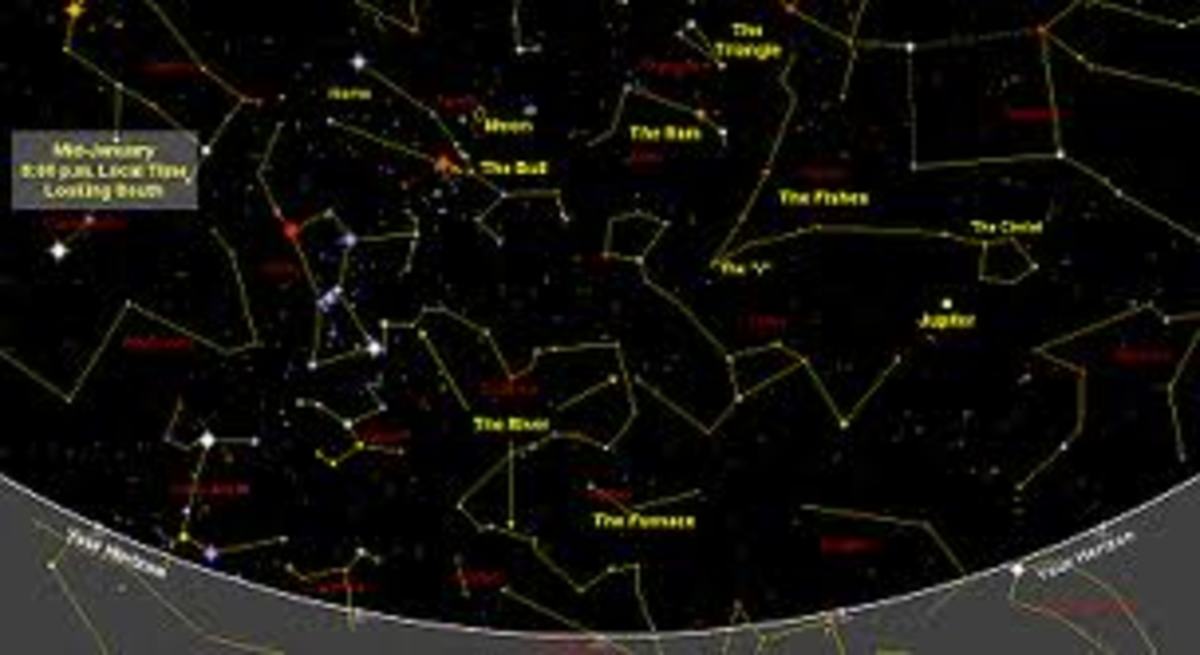Sirius
This simplified star map shows where Sirius is located now.
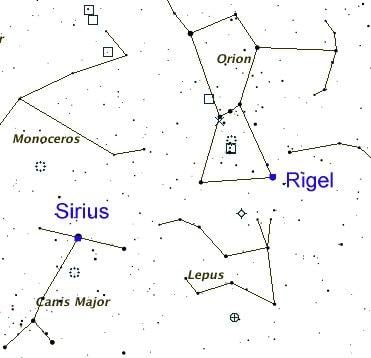
Confusion About the Dog Star
Sirius is the brightest star in the sky and it can be found by looking first for the three stars that make up the belt of the constellation Orion. In the northern hemisphere, look to the left by looking along a straight line from Orion's belt. It is the principle star of Canis Major located south of the constellation of Gemini. Sirius being the brightest star that you will see in the sky is surpassed only by Venus and Jupiter in brightness. It is 2.6 parsecs from our solar system and has a white dwarf companion. Sirius is about two times more massive than the sun and some 25 time brighter. It is also a fast moving star. In ancient times, the timely helical rising of Sirius just before the sun, marked the annual flooding of the Nile in Egypt. It also marked the approach of the summer solstice. After this, it could not be seen for 70 days due to the glare of the sun. When it returned, this was described as the return of Isis and Osiris from the duat. The author Cyril Fagan describes the process in his book on ancient astrology. To the Greeks, it marked the beginning of the dog days, which we have carried forward from the beginning of summer. To the ancient Assyrians and Persians, the star was called Dagon. This word spread out from there and may be the origin of the word Dogon now associated with an African tribe south of the Sahara Desert.
Some people make the mistake of saying that Sirius is the most evil star in the sky, but that dishonor is reserved for Algol; the eye of the Medusa in ancient Greek myth. Algol is a triple star system with two of the stars close together. It gives the appearance of winking brighter and dimmer and brighter again over a 68.75 hour cycle due to the orbiting of the three stars. Perhaps, the star seen as a blessing of the annual flood in Egypt was also seen as a curse in Greece where the helical rising of Sirius represented the hot dry days that wilted crops, made men grow weak and women more amorous was the source of it being identified with evil. This then shows that the regard and definition for various stars varied from culture to culture and location and location depending on what occurred when certain stars and asterisms were in prominent positions.
For the Egyptians of the 4th dynasty, the stars last visible helical rising presaged the flooding of the Nile, which meant that the lands would be fertilized with new silt and the fishing over the same lands that formerly grew crops would commence. The source of the flood was much further to the south on the Nile with the tropical seasonal rains. This increase of water would work its way to lower Egypt at the time of the last appearance of Sirius. To the Egyptians, this was a blessing as it allowed them to grow at least two crops a year. Sirius was a very fortunate star in their cosmogony. Lower Egypt itself seldom saw any rain and the people lived under clear skies allowing an excellent view of the night skies for thousands of years. This allowed them to align their structures according to the path of the sun and stars. They had a sophisticated understanding of the sun, moon and stars and this shows in their constructions.
Christians also unknowingly celebrate the star Sirius. It was the star that was westward leading in the popular Christmas carol that the three eastern kings were following to find the Christ child. During the time leading up to the summer solstice, the three kings, the stars in the belt of Orion would rise first, followed by Sirius and then the Sun. But what was true then, is no longer true due to the precession of the equinox. As it stands now, the summer solstice point in Taurus – Orion and far from Sirius. As for the birth of Jesus, this is now thought to have occurred during the rare parallel conjunction of Jupiter and Saturn in 6 BC and has little to do with the helical rising of Sirius. That is reserved for the Egyptian god Isis and Osiris, whose name sounds close to Sirius. Given the time period, the helical rising is closer to the time of Moses and the exodus than the time of Jesus. However, the symbolism of the Osiris and Isis is carried over to Jesus and Mary, his mother, which is why the three kings of the east were following the star, Sirius that was westward leading. According to the mythology, the celestial Jesus, the sun was born of Virgo, the virgin, which was then at the time of Jesus, a fall equinox constellation. But this was the time of a change of age from Aries to Pisces and its opposite season Libra – Virgo. This is what is behind the saying, “the lamb of God slain before the foundation of the eon – world”. It was a transition of the equinox from Aries to Pisces. Correspondingly, Sirius drifted out of alignment to the seasons and it no longer presages the flood of the Nile with its helical rising in the era of Jesus and the current era.
The Sirius system contains two stars, Sirius A, the star we can see with the naked eye, and Sirius B which is a white dwarf barely the size of earth and is separated from Sirius A by the same distance that Uranus is from the sun. The two have a period of 50.1 years. It is reported that the Dogon tribe of Africa follow the Sirius cycle of 50.1 years. They tack time in relation to this and celebrate the period of the pair with a ceremony practiced once every 50 years.
Today, we mark the stars with two systems, the standard, or tropical zodiac measured as zero degrees Aries for the spring equinox. The sidereal system on the other hand measures the spring equinox in about 25 degrees of Pisces and is based on how the stars actually appear in the sky. This distinction is important because it tells us a large number of things. It tells us that Sirius no longer can be used to “predict” the flooding of the Nile. It does not even presage Christmas or anything else in the current era. Some people still mark their calendar using the sky as it appears now. Among them are the Hindus and the Maya. The most significant event of recent times was the winter solstice full lunar eclipse of 2010 that allowed the true alignment of the Mayan long count. But this is another subject and for the Maya, Sirius did not hold the same significance as Venus, the moon, sun, the Heart of Sky and the dark rift.
But Sirius itself is moving through the sky in relation to the other “fixed” stars. This can be detected because it is so close to us relative to almost every other star. Though this movement is small compared to other changes, nevertheless, it would also contribute to Sirius' drift away from important alignments.
Algol, the “real evil star”, on the other hand is located in the constellation Perseus and is the star that is described as one of the eyes of the gorgon, Medusa. Perseus is lined up with the constellation of Aries on the celestial sphere north of that constellation. Algol itself is close to the celestial longitude of 15 degrees of Aries. It would have aligned to the spring equinox in the era of around 1,000 BC.
Sirius' influence on the solar system
An analysis of the proper motion of Sirius can be found here
- HIGHLIGHTS ~ SIRIUS
The true motion of Sirius is tracked here and it is complex. For those into the depth of the science of star motions will find that there are no such things as "fixed stars".

